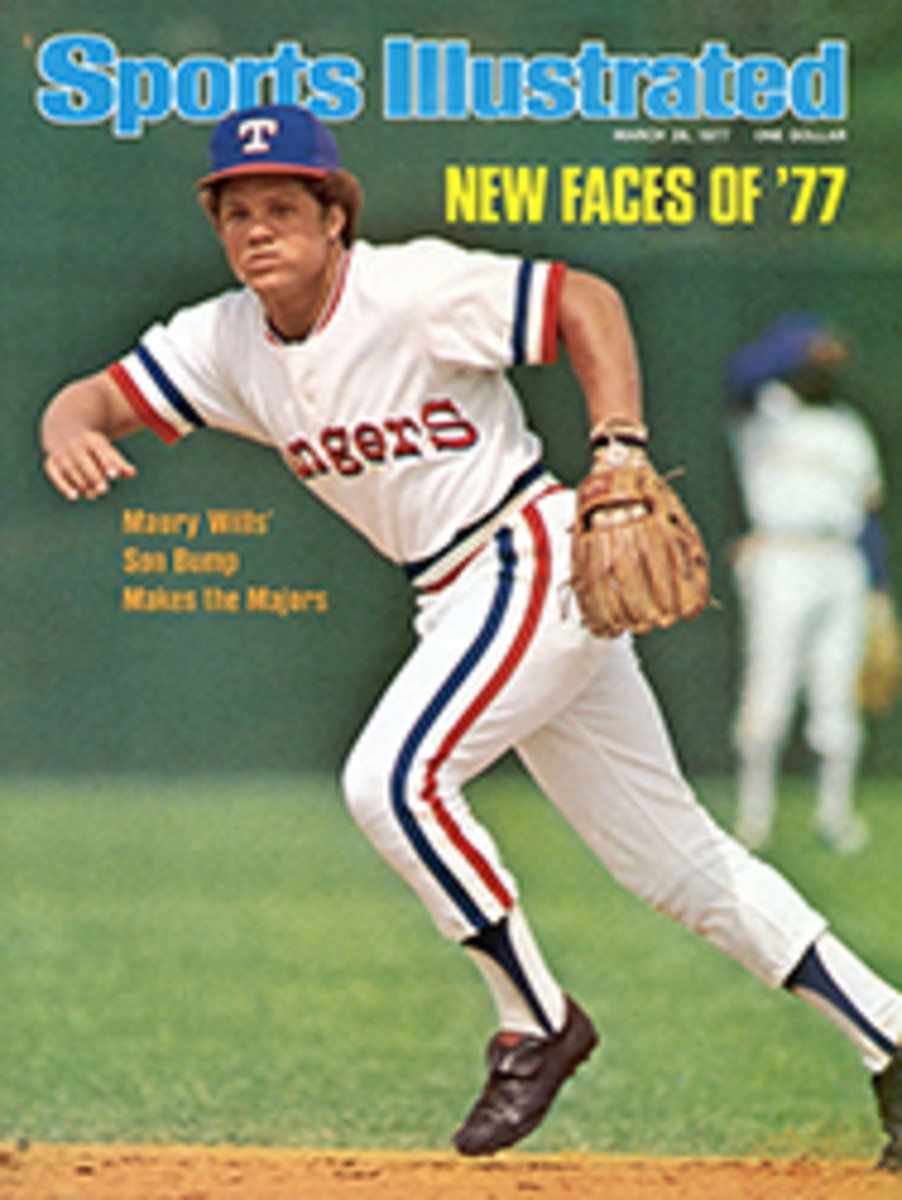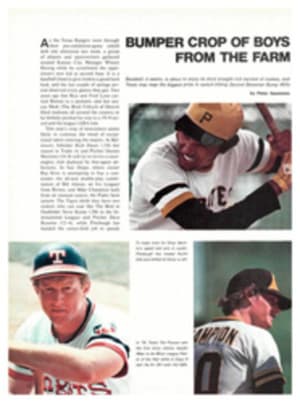
Up to the scuppers in cups
To add luster to last week's Congressional Cup match-race series off Long Beach, Calif., the Long Beach Yacht Club invited six of the eight skippers who will be involved in the agonies of the America's Cup this summer. Five accepted, cherishing the knowledge to be gained from meeting nine rivals one-on-one in round-robin competition.
If there are lessons to be learned in defeat, the America's Cuppers were a wiser lot by the end of the opening round. Ted Hood, who will be at the helm of the cup entry Independence, was beaten start to finish by Marc Hollerbach of the Great Lakes Yacht Racing Union. Pelle Petterson, who will skipper the Swedish challenger, Sverige, got an almost even start against Dick Deaver, the defending champion at Long Beach, but faltered badly, trailing by more than 15 boat lengths at the midway point in the six-mile race. Lowell North, helmsman of the new 12-meter Enterprise, was beaten across the starting line by Tony Parker, last year's runner-up. Although he worked into the lead on the second windward leg, North finally lost a squeaker by two seconds. At the end of the first series, the America's Cuppers' total in the win column might have been zip, except that the draw pitted two of them against each other—Noel Robins, helmsman of the Western Australian challenger, Australia, met Ted Turner, who will be at the helm of the 1974 defender, Courageous. Turner won the start and marched away, finishing more than 15 boat lengths ahead of the Aussie.
Although the results of the first go-around suggest otherwise, when all the racing was done last weekend the Congressional Cup had taken on luster without robbing the prestigious America's Cup of any. Neither Petterson of Sweden nor Robins of Australia had had any match-racing experience in oceangoing hulls like the venerable Cal 40s used off Long Beach. And despite his solid reputation as a match and ocean racer, Ted Hood ranked as an odd sort of veteran-novice. In 20 years of success in large boats, around buoys and across the briny, he had only once—in the 1975 Congressional Cup—been at the helm of a tiller-steered hull. Nevertheless, the Newport-bound skippers won 13 races from the non-America's Cuppers, while losing only 12.
When the veteran skipper Arthur Knapp learned that the French Club d'Hyeres, which is also challenging for the America's Cup, had declined the invitation to send a Congressional Cup team, he exclaimed, "Three days in the Congressional Cup would be worth two weeks of chasing themselves around on the Mediterranean." Because Knapp served on the mammoth J boats of yesteryear and also as a 12-meter skipper, he is an authority.
The current 12-meter men—Hood, Robins and Petterson—confirm Knapp's opinion. "We are extremely busy now getting our Twelves in the water," Hood said, "and I would not have come here if I did not think it would be valuable. These boats are quicker than 12-meters. In them you often must think and react faster." Amazed at the alacrity of the Cal 40s, Robins declared, "We had to come. Without such experience we might be babes to the slaughter. Chasing your rival around before the start, you have to be careful. Back the jib too smartly on one of these beasts and it will start chasing its own tail." Petterson, awed both by the tractability and truculence of the Cal 40, observed, "You must handle them like a jockey, easy on the reins."
In contrast to latter-day hulls, Cal 40s resemble museum pieces more than cavalry mounts, but it is largely because of them that Southern California has been preeminent in match racing. In comparison to the Congressional Cup, the races for the America's Cup are staid affairs, so removed from most of the spectators' view that they might as well be held in a dry sea on the back side of the moon. The instructions that the Long Beach Yacht Club issues to spectator boats read as follows: "It is not unusual for the racers to try to penetrate the spectator fleet and use it to their advantage. For this reason, we request spectators to avoid all the racing boats, particularly at the start. However, if you should find yourself in such a position, then DO NOT MOVE."
During the 10-minute warning period a skipper can sail as far away from the starting area as he wants to avoid premature conflict and save his crew for the tacking efforts during the actual race. Reluctant skippers have sailed more than a half mile away pursued by rivals wanting to mix it up immediately.
The dominance of Southern Californians in the Congressional Cup can be explained several ways. One wit suggested that they have a racing edge because they have honed the aggressive and defensive skills required by driving on their freeways. In the early years, before the competition had much stature, local skippers prevailed in part because more of them were competing, but between 1971 and 1976 the Southern Californians were outnumbered two to one. Still, no one from east of the Mississippi—or for that matter, east of California's Santa Ana Freeway—ever won.
Then this year along came Ted Turner, an Easterner—or Southeasterner, if you will—who has often upset the established order when at the helm of stock boats and hand-me-down hulls. For example, in 1966 in a stock Cal 40, then costing about $25,000, he whomped the SORC fleet. But in six previous tries for the Congressional Cup, Turner had succeeded in losing in just about every possible way short of swamping.
He set about his quest this year in customary style, bad-mouthing his chances. Before the event, he confided, "I really don't have a chance; my mind is scattered. I'm thinking about Bowie Kuhn and the National League and the NBA and CBS." And later he said, "I am as optimistic as a Polish cavalry officer caught between the Germans and the Russians in 1939." Then, having worked himself into a good, low state of self-esteem, he proceeded to win six straight.
The boat he drew by lot was Persephone, the very first Cal 40 off the mold back in 1963. Although Persephone is not considered the best of hulls, in his string of wins Turner knocked off all of his 12-meter rivals. After beating Robins, he won a close one from North, the two of them luffing together for three minutes before the start like timid old maids, then scampering down to the port end of the line with the intention of rubbing each other off on a race-committee boat—a scuffle that gave Turner a meager one-second lead across the line. Turner took off even with Petterson in their duel, and widened a lead on all but one leg to win by 52 seconds. In his match against Hood, Turner forced his rival beyond the starboard end of the line and again won handily.
Winning big is not Turner's style, nor seemingly in his stars. He thrives on cliff-hangers and crises large and small. Last year, also in Persephone, Turner was 4-0 before dropping an error-pocked race to an Australian, Hugh Treharne, who had been winless. After two more losses Turner ended in a four-way tie for first, and in the race-offs finished fourth.
This year in the seventh round Turner met Dick Deaver, the defender. Deaver committed what was, ostensibly at least, a foul, when a carrying wave brought his bow down on Turner's stern in the jockeying before the start. While Deaver rounded the starting buoy to absolve the foul, Turner was off to a 41-second lead. He managed to stay well ahead through two legs, but Deaver ate the margin away the second time to windward and, after Turner had some jib trouble, finished about nine lengths in front.
At the end of that round Turner stood 6-1 and Deaver 5-2. If two men tie for first, the title goes to the one who has beaten the other head to head. That meant that if Deaver won both his last races and Turner lost one, Deaver would retain the title. In his next race, against Shawn Durnin, a Southern Californian who had not won one, Turner was at his squeaky best. He lost the start by nine seconds and was still that far behind with a leg and a half to go. He caught Durnin before the last leeward mark, and on the short beat to the finish line the Turner crew outtacked Durnin's six out of seven times. Because Deaver lost in the eighth round, Turner took the title with a race to spare.
Now that Turner has whupped his Newport rivals, does that mean he is the favorite for the America's Cup? The Congressional Cup is raced in spunky old girls all from the same mold and, despite the varied wrinkles of their mainsails, theoretically equal. In the 12-meter game, sail and hull development count for a lot. All that the Congressional Cup means is that there are now five 12-meter skippers who will be a trifle tougher in the wars off Newport.
PHOTO
Prime America's Cuppers Lowell North (left) and Ted Hood claw to windward in the kind of close-quarter racing for which the event is known.
PHOTO
Turner sailed an old girl named Persephone.

